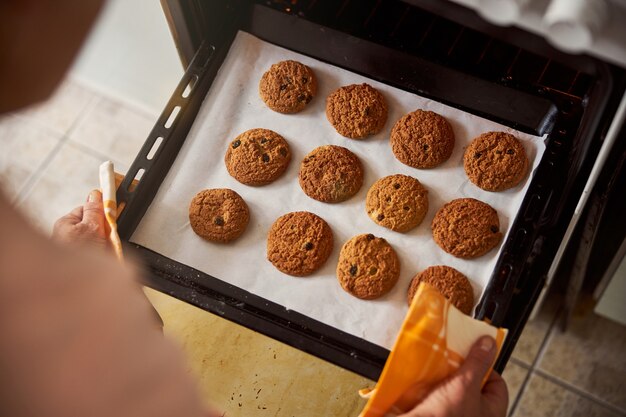Discover the Delight of Refrigerator Cookies: A Complete Guide
If you're a fan of homemade cookies but dread the fuss and mess that traditional baking can entail, refrigerator cookies just might be the solution you’re looking for. Known for their convenient preparation and delicious results, refrigerator cookies have been a favorite in households for generations. But what exactly are they, and how can you incorporate them into your baking repertoire? Let’s explore this delightful category of cookies, their rich history, crafting tips, and more.
🥣 What are Refrigerator Cookies?
Refrigerator cookies are also commonly referred to as icebox cookies. These are cookies made from dough that is chilled before baking. The chilling process not only makes the dough easier to handle but also improves the flavor and texture of the cookies.
The Origin of Refrigerator Cookies
The concept originated in times when iceboxes were used before modern refrigeration systems became widespread. Home bakers discovered they could prepare dough ahead of time, store it in the icebox, and bake fresh cookies at their convenience.
📋 The Appeal of Refrigerator Cookies
1. Convenience
One of their biggest attractions is the ability to prepare in advance. You can mix the dough, shape it into logs, and freeze or refrigerate it. When you are ready for fresh cookies, just slice the dough and bake.
2. Versatility
Refrigerator cookies can be adapted with an endless array of flavors. Whether you’re adding nuts, chocolate chips, or your favorite spices, these cookies can be as simple or as complex as you desire.
3. Perfect for Beginners
If you’re new to baking, refrigerator cookies provide an approachable format. The dough is forgiving, and the results are typically reliable.
🍪 How to Make Refrigerator Cookies
Creating refrigerator cookies is a straightforward process, but knowing a few tips can elevate your baking game. Let’s break it down:
Basic Ingredients
- Butter: Provides flavor and texture.
- Sugar: Granulated sugar is commonly used.
- Eggs: Acts as a binding agent.
- Flour: All-purpose flour is standard.
- Flavorings: Vanilla extract, spices, or other flavorings to personal taste.
Step-by-step Guide
1. Making the Dough
- Cream Butter and Sugar: Start by beating butter with sugar until light and fluffy.
- Add Eggs and Flavorings: Mix in eggs, vanilla, and any other liquid flavorings.
- Incorporate Dry Ingredients: Gradually add in flour and any spices until just combined.
2. Shaping the Dough
- Form into Logs: Divide the dough into manageable pieces, then roll into logs.
- Wrap and Chill: Wrap logs in parchment or plastic wrap and refrigerate until firm (typically at least two hours).
3. Baking
- Preheat Oven: Set your oven to the recommended temperature.
- Slice and Bake: Slice cookies approximately ¼ inch thick and place on a baking sheet. Bake until edges are golden.
Tips for Success
- Precision is Key: Accurate measurement of ingredients is crucial.
- Don’t Skip the Chill: Chilling helps develop flavor and prevents cookies from spreading too much.
- Uniform Slices: Aim for evenly sliced cookies for consistent baking.
🎨 Variations and Flavor Ideas
Refrigerator cookies are a blank canvas. Here are some ideas to customize your cookies:
- Chocolate Chip: Add mini chocolate chips to the dough.
- Spiced: Mix in cinnamon, nutmeg, or ginger for a warm spice flavor.
- Nutty: Fold in chopped nuts like almonds or pecans.
- Zesty: Incorporate citrus zest like lemon or orange for a fresh twist.
📅 Storage and Freezing Tips
Storing Dough
- In the Fridge: Wrapped dough can be stored in the refrigerator for up to a week.
- In the Freezer: Store in the freezer for up to three months. Just slice and bake directly from the freezer, adding a few additional minutes to the baking time.
Storing Baked Cookies
- At Room Temperature: Store in an airtight container for up to a week.
- In the Freezer: Freeze baked cookies for up to three months.
🔄 Troubleshooting Common Issues
Issue: Cookies Spread Too Much
Solution: Ensure dough is adequately chilled and that measuring of ingredients is precise.
Issue: Dry or Crumbly Dough
Solution: Make sure butter is not too cold, which can prevent adequate mixing.
Issue: Uneven Baking
Solution: Use a cookie sheet, not a pizza stone, and space cookies evenly to promote consistent heat circulation.
📜 Refrigerator Cookies vs. Other Cookies
How do refrigerator cookies compare with other cookie types? The main difference is in preparation:
- Drop Cookies: Dough is softer and dropped by spoonfuls onto the sheet.
- Rolled Cookies: Dough is rolled out and cut with cookie cutters.
- Bar Cookies: Baked in a pan and cut into squares.
Refrigerator cookies offer simplicity and the ability to prepare ahead, perfect for holiday baking or unexpected guests.
📌 Quick Tips Recap
Here’s a quick breakdown to help you master refrigerator cookies:
| Tip | Description |
|---|---|
| 🕒 Ahead of Time | Prepare dough ahead for easy baking anytime. |
| ❄️ Chill Thoroughly | Essential for flavor development and control over spreading. |
| 📏 Slice Evenly | For uniform size and even baking. |
| 🧂 Explore Flavors | Don’t hesitate to mix in different flavor profiles or textures. |
Refrigerator cookies bring a mix of convenience, variety, and ease to your kitchen that other cookies may not. Whether you’re sticking with a classic recipe or adding your own twist, these cookies are a delightful addition to any baker’s collection. So, next time you’re craving something sweet yet manageable, consider giving refrigerator cookies a place in your culinary creations.
